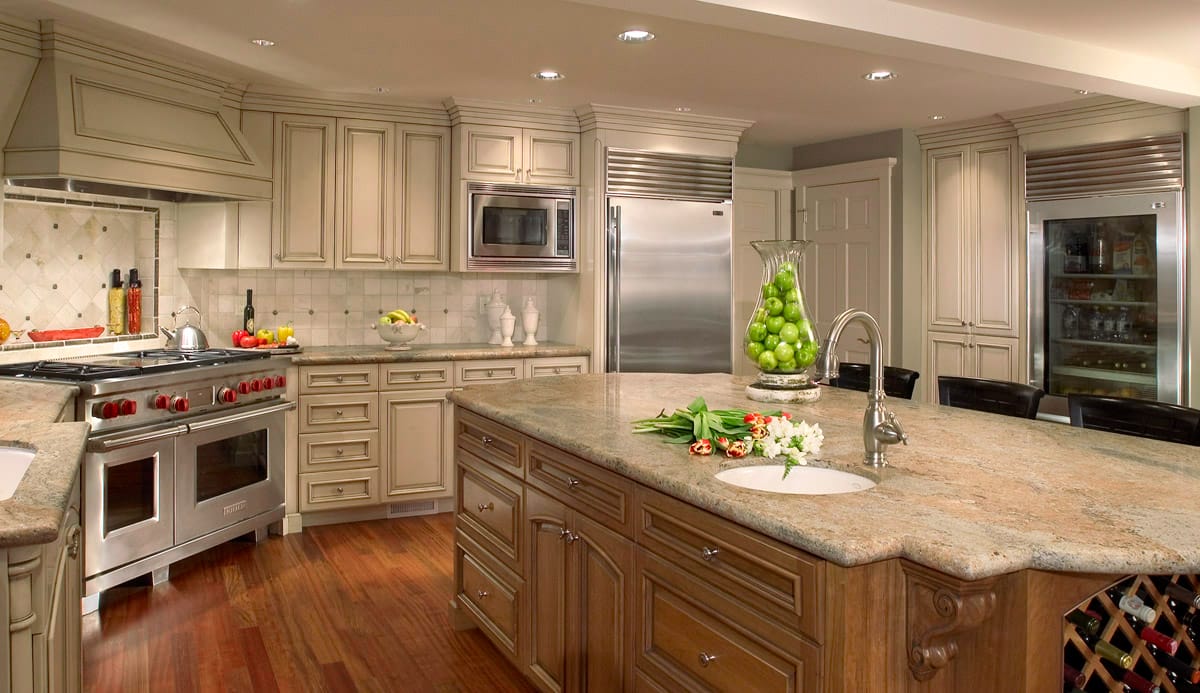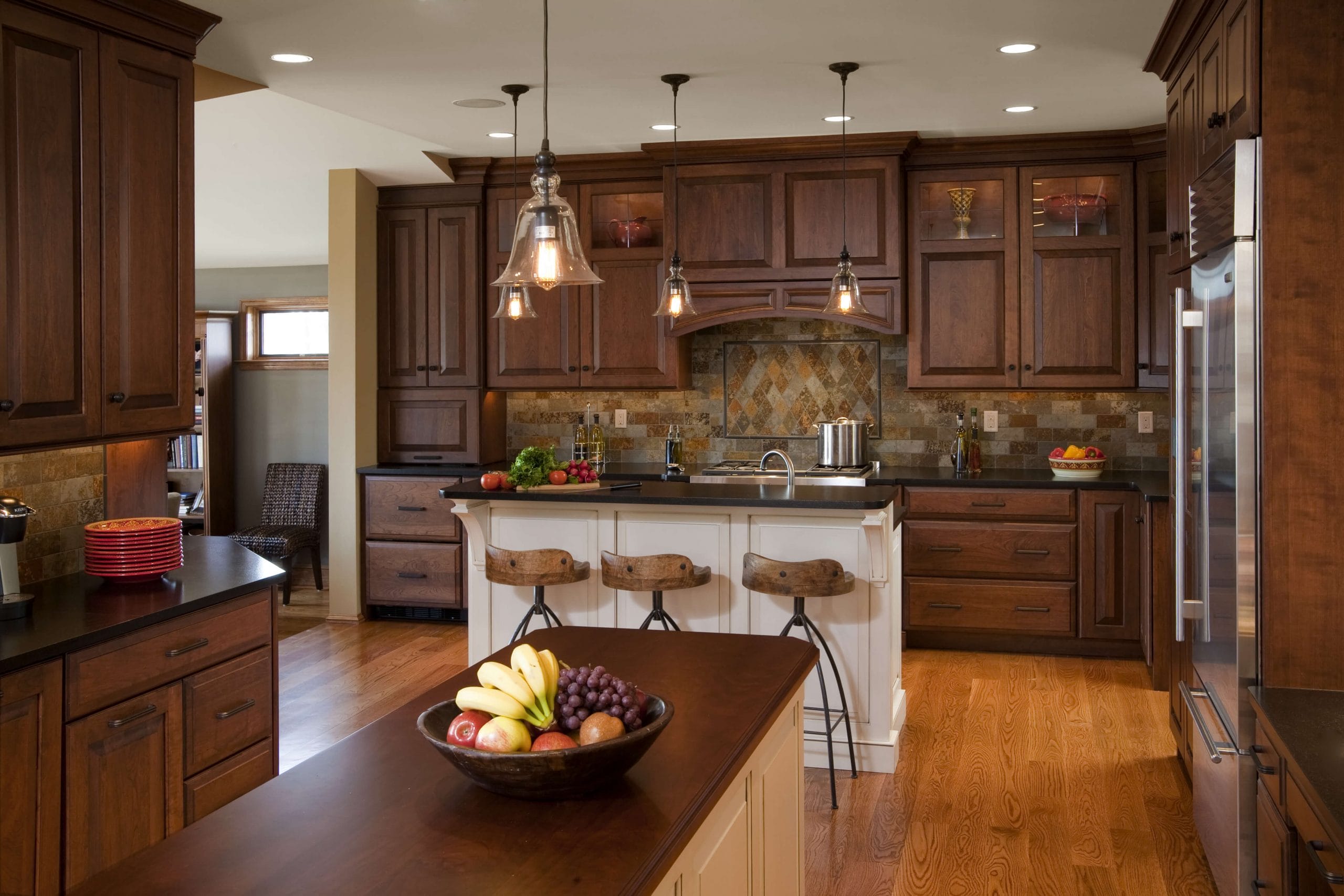Kitchen trends are constantly changing. Despite this, the popularity of traditional kitchen designs remains consistent. It’s the go-to for many designers and homeowners. Traditional styles are unique in bringing together some of the best aspects of many classic design trends. It’s reminiscent of many other types, yet still a unique style of its own.
What is a “Traditional” Style, and Why is it Different?
Designers and homeowners love traditional kitchen styles because they’re so easily customizable. Even so, there are a few recurring themes that make a design stand out as conventional.
The sleek look of modern and minimalist homes is seen as elegant and high-class. They can also be overdone, making them unwelcoming and clinical. On the flip side, you have gothic, eclectic, and post-modern design styles, often over-decorated and overwhelming.
Rustic and Boho styles try to find a middle ground but often miss the mark. The shabby-chic, wood-reliant rustic style can end up resembling a barn. Boho can go from unique, layered decorations to a cluttered mess.
The traditional design style takes elements from many of these and combines them in an eye-catching and comforting way, using the natural materials of rustic and combining it with the outdoorsy-ness of Boho. It draws from the simplicity of modern minimalism without being overbearing, topped off with a splash of vintage personality.
What Does Traditional Styling Look Like?

Simplicity, broken up by the occasional splash of a big, bold statement piece. When done correctly, it can be jaw-droppingly gorgeous. The general simplicity draws attention to the accent or centerpiece. In turn, these splashes of personality rescue it from becoming a drab, lifeless room.
Traditional designs tend to be the best of both worlds — the perfect balance of minimalism and personality. First, pick materials frequent in rustic or contemporary designs, things like natural stone, authentic hardwood, or vinyl/laminate imitations for flooring.
In older homes, wood-paneled walls are common, and though it’s faded out of style somewhat, it isn’t gone yet. Alternatively, you could use natural stone, brick, or neutral tones of paint or wallpaper, anything welcoming that won’t draw attention to itself.
Accenting Traditional Designs
Picture-perfect accents are the trademark of traditional designs. Lighting is the most underrated way of accentuating a structure, often distinguishing between perfection and a mess. Traditional decor is usually lit by large windows, skylights, amber-toned light fixtures, or a combination of the three.
Wood paneling is a popular choice, but breaking it up is a good idea because it is monotonous having the same primary material on all your walls. That doesn’t mean every wall needs a different material, though. You can accomplish this with large windows, pictures, mirrors, and more. Stone fireplaces are especially common in older homes with wood paneling.
Most important is the personal statement piece that defines traditional styles. There are many options, so do what feels right to you. Decoration trends come and go in the blink of an eye, so just go with something that speaks to you. A few ideas to get you started include:
- A photo wall for those with many family photos
- A stone fireplace for anyone loving a cozy place to sit in the colder months
- A large, colorful clock
- A plant or two in a unique pot or even a hanging planter
- A rug tying the room to the rest of the home
Traditional Designs in Kitchens

Traditional designs are more common in kitchens than in any other room in the house. After all, how could it function if there was clutter from an eclectic design everywhere? Traditional kitchen designs are reasonably similar to contemporary or modern designs. They include stone (usually granite or marble) countertops, wooden cabinetry, and metal (typically stainless steel) appliances. They often feature lots of natural light, featuring at the very least some sizable windows above the sink.
The difference is in the details. Modern kitchens tend to be dominated by white colors. White countertops, light or white floors, white surfaces, and even white lighting. Contemporary styles are similar, though they feature accent colors more often. On the other hand, traditional kitchens tend to use greys or light browns and focus less on lighting. Instead, the focal point of a classic kitchen design is often the countertops, appliances, and, of course, the accent piece.
How Winthorpe Can Help
One of the most important parts of designing a traditional kitchen is using elements that speak to you. Whether you need help discovering those elements or incorporating them practically and functionally, Winthorpe Design and Build is here to help. Our designers are patient, understanding, and highly skilled. They’re willing to sit and talk with you until all of the details are worked out, and you’re ready for our building team to get started. We value nothing more than our clients’ happiness, and we put our years of experience to work with every project in the hopes of delivering the clients’ dream homes.
If you want to work with a design and build team that cares about you and will go to the end of the earth to ensure you get the results you deserve, contact us today. You can experience our new virtual consultation design process. Schedule a time to talk with us — we’d be happy to help!





